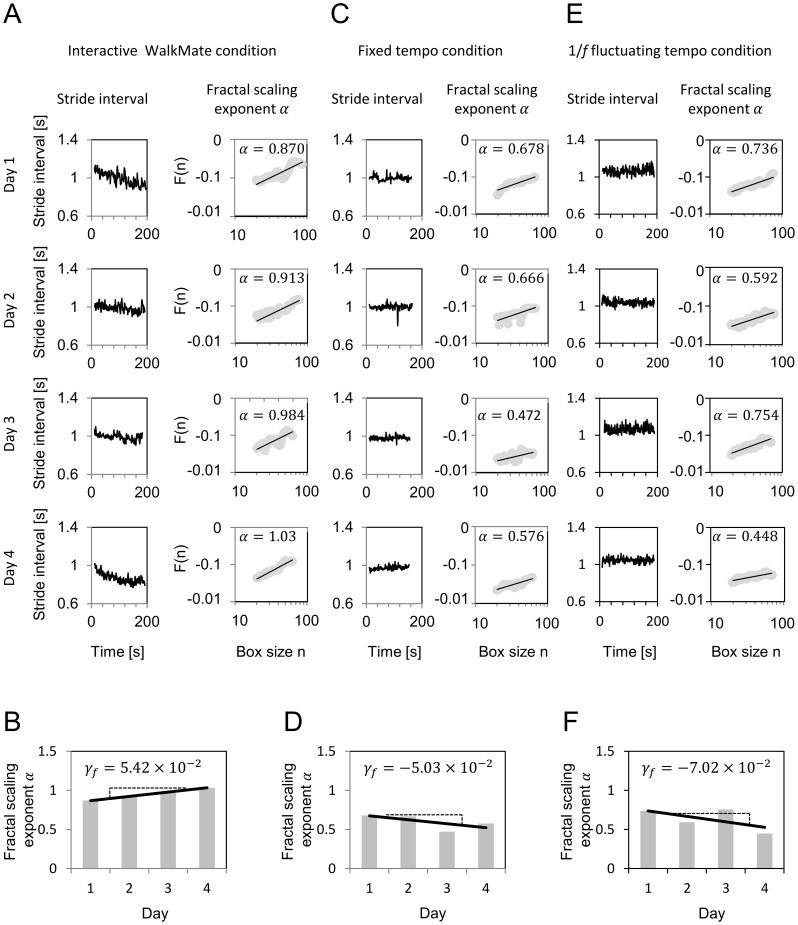Figure 2. Example results of the gait relearning effects in Parkinson's disease subjects under three rhythmic cue conditions, i.e., one in the interactive WalkMate condition, another in the fixed tempo condition and the other in the 1/f fluctuating tempo condition.
(A) The stride intervals and detrended fluctuation analysis (DFA) of the fractal scaling exponent α for the baseline walking trial of the subjects in the interactive WalkMate condition over four days. (B) The gait relearning effect γf for the subjects in the WalkMate condition. In each four-day experiment, the fractal scaling exponent was calculated by applying the DFA to the stride interval time series and the fractal scaling exponents were evaluated using the linear regression slope of the gait relearning effect indicator γf. The positive γf value indicates a trend toward increased fractal scaling, which demonstrates the effect of interactive WalkMate rhythmic cues on gait relearning. (C) The stride intervals and DFA fractal scaling exponents α in the fixed tempo condition. (D) The gait relearning effect γf in the fixed tempo condition. (E) The stride intervals and DFA fractal scaling exponents α in the 1/f fluctuating tempo condition. (F) The gait relearning effect γf in the 1/f fluctuating tempo condition. The nonpositive γf values indicate that there were no increasing trends in the fractal scaling exponents, which demonstrates that fixed tempo and 1/f fluctuating tempo rhythmic cues showed no gait relearning effects.

